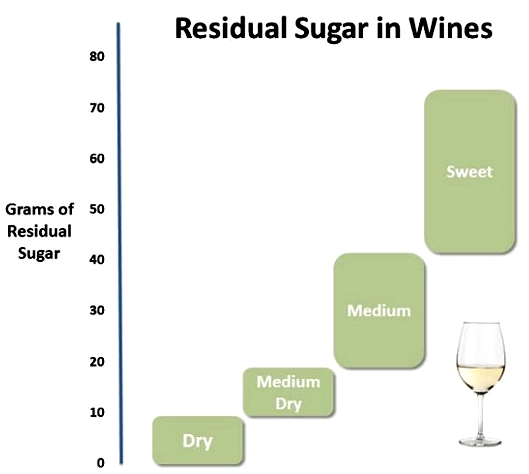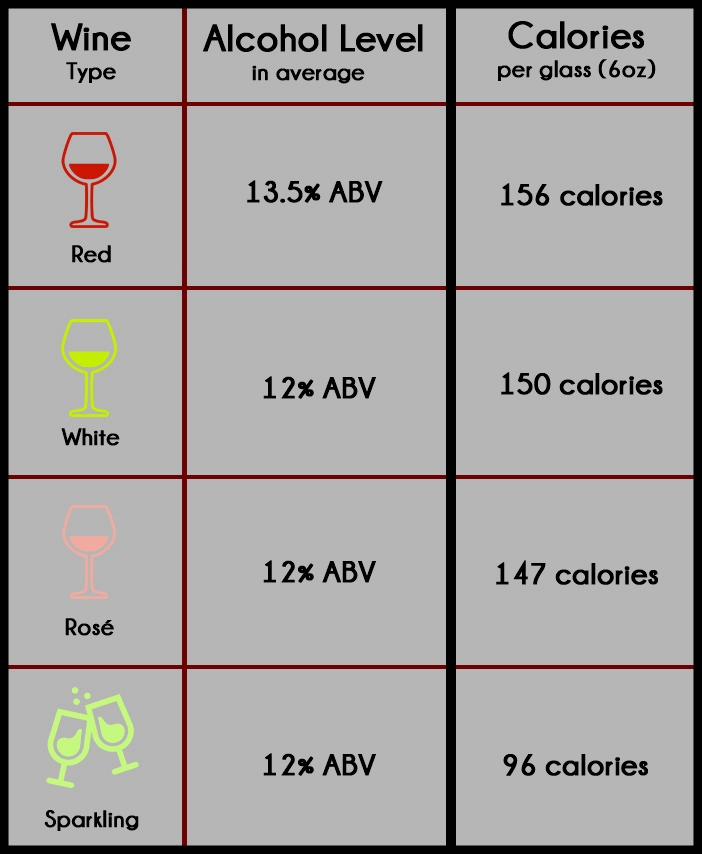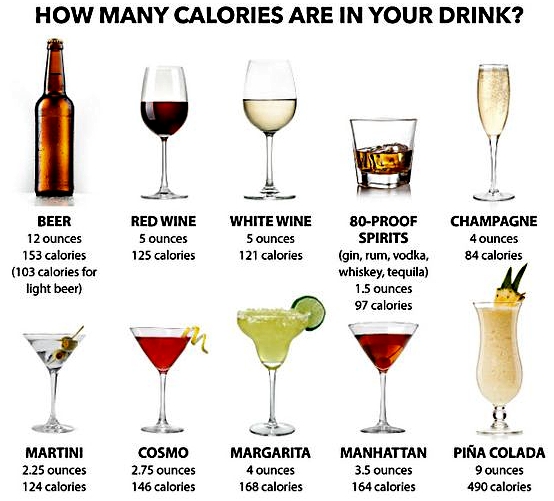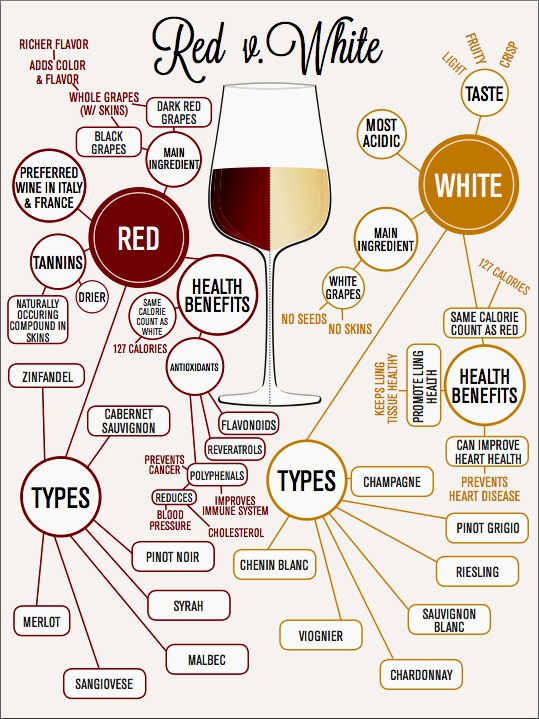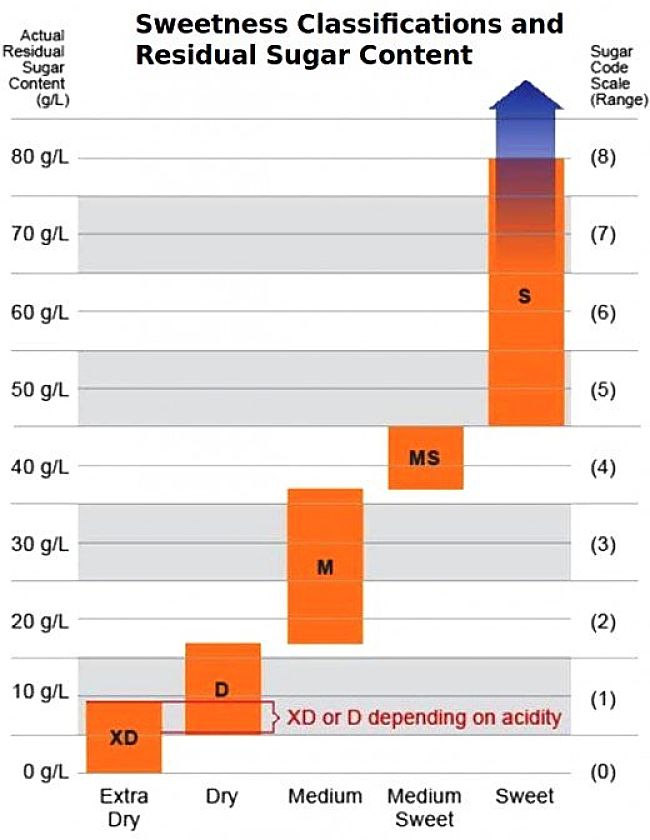Residual Sugar in Wine - Sweetness Chart and Calories in Wine Summary
There is a lot of confusion about the terms 'sweet' and 'dry' wines and how much sugar, residual or added, is in your favorite wine. Most wine varieties that people drink are technically regarded as dry, that is the wine contains less than 1% residual sugar, after the fermentation process has consumed most of it and turned it into alcohol. To add to the confusion some sugar is added to wine, especially cheaper varieties to improve its taste.
Yeast added to the grapes during fermentation, consumes most of sugar in the grape juice yielding alcohol and carbon dioxide. Wine is fermented to consume most of the sugar because this reduction in the amount of residual sugar preserves the wine and prevents other microbes from degrading the wine in the bottle. However, the amount of residual sugar in wine varies between varieties and is often shown on the wine label. The sugar is an important contributor to the amount of calories in wine. Alcohol itself contributes to the calories. The alcohol content and sometimes the amount of calories are sometimes shown on the labels.
This article review the amount of residual sugar in wine and how it relates to the common sweet to extra dry, dry, semi-sweet, sweet and very sweet classification of wines. It includes charts summarising the sugar content of wines and the calories in the common wine varieties.
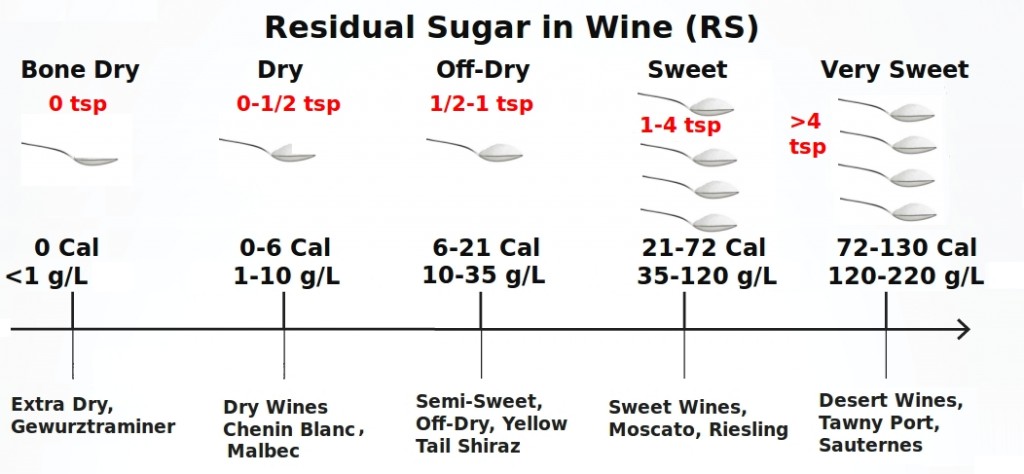
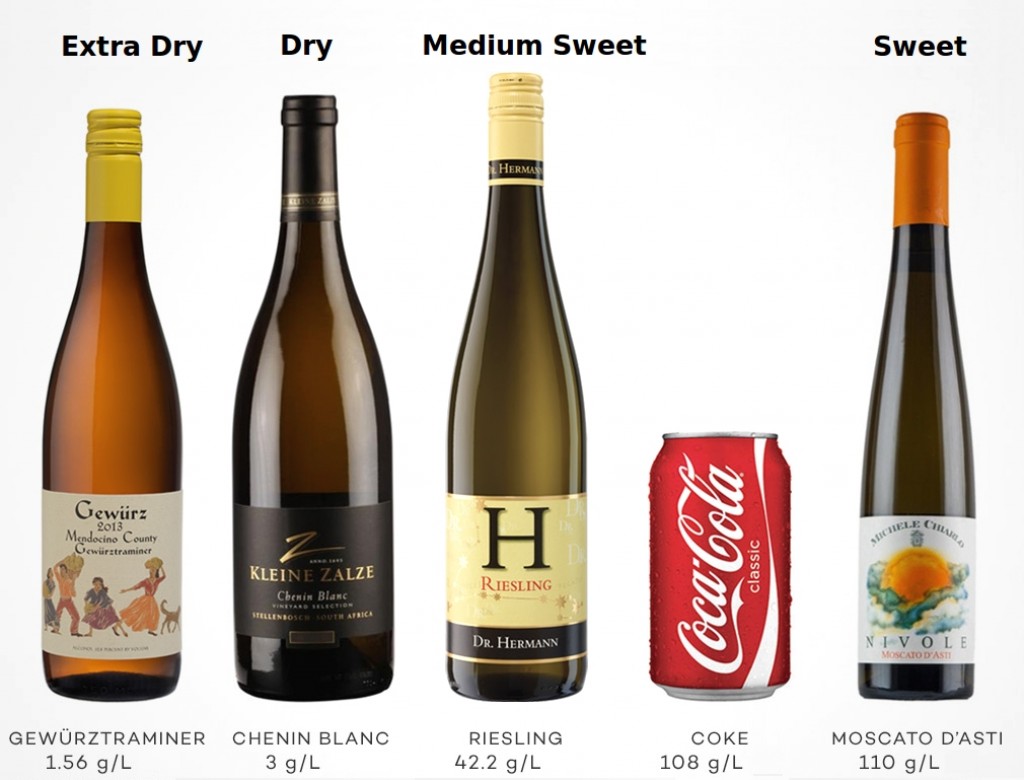
The standard amount of residual sugar for most common table wines ranged from 0-3%. However sweet dessert wines can range from 1.2% to even as high as 20% residual sugar.
Oddly the fermentation process stops when the amount of sugar in the wine reaches about 15% alcohol.
For Port wines, extra alcohol is added to the wine to stop the yeast fermentation and the wine contains a lot of residual sugar.
There is a general misunderstanding that the 'sweetness' of a wine reflects the amount of residual sugar in it. Dry wines, with low residual sugar can taste quite sweet.
The sweet taste of a wine depends on other factors such as alcohol, glycerol, acidity and the amount of tannins in the wine. The temperature at which the wine is served can affect how sweet or dry it tastes.
Even an extra-dry wine, such as a 'bone-dry' white wine can taste sweet even when it has a residual sugar level of less than 0.2%. A relatively high level of alcohol and the amount of glycerol in the wine can increase its 'sweetness'.
To address these issue, this article includes charts and tables summarizing the residual sugar and calories in wine varieties. The residual sugar is often shown on the label of a bottle in one of three ways:
► grams/100ml,
► grams/Liter,
► or as a Percentage.
In the case of Port wines, alcohol is added to the wine to stop the yeast fermentation from consuming all of the sugar.
Sometimes, extra grape sugar is added back to the wine after the fermentation process has completed to create sweetness to disguise the inferior quality of a cheap wine.
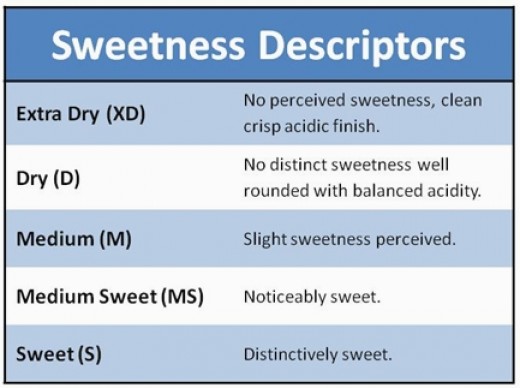
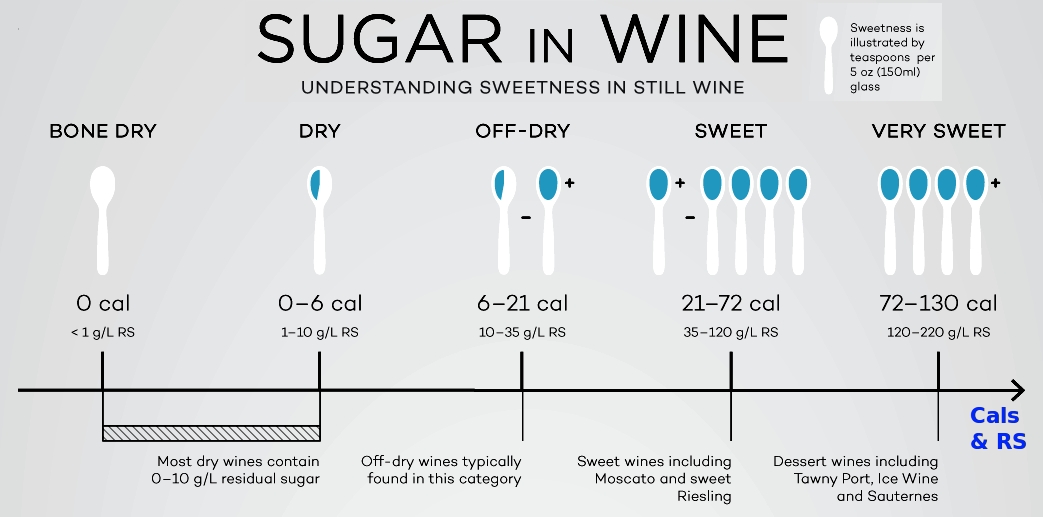
Calories in Wine Types
The typical number of calories in a glass and bottle of various wine types is shown in the table below. Residual sugar only contributes part of the calories in wine. Alcohol also contributes significant calories.
Calorie content of wines in various sweetness categories
|
Classification
|
Calorie Content
|
|---|---|
|
Extra or Bone Dry
|
<1 cal per glass
|
|
Dry
|
0-6 calories per glass
|
|
Off-Dry
|
6–21 calories per glass
|
|
Sweet
|
21–72 calories per glass
|
|
Very Sweet
|
72–130 calories per glass
|
Calories in Typical Wine Varieties with Lowest Cals at the top (click headings to sort in other ways)
|
Calories in Wine Varieties
|
Glass of Wine 5 fl oz (148 ml)
|
Bottle of Wine 25.4 fl oz (750 ml)
|
Type
|
|---|---|---|---|
|
Carignane
|
109
|
553
|
Red
|
|
Muller Thurgau
|
112
|
568
|
White
|
|
Gamay
|
115
|
583
|
Red
|
|
Lemberger
|
118
|
599
|
Red
|
|
Chenin Blanc
|
118
|
599
|
White
|
|
Riesling
|
118
|
599
|
White
|
|
Gewurztraminer
|
119
|
604
|
White
|
|
Pinot Blanc
|
119
|
604
|
White
|
|
Sauvignon Blanc
|
119
|
604
|
White
|
|
Pinot Noir
|
121
|
614
|
Red
|
|
White Table Wine
|
121
|
614
|
White
|
|
Fume Blanc
|
121
|
614
|
White
|
|
Semillon
|
121
|
614
|
White
|
|
Cabernet Sauvignon
|
122
|
619
|
Red
|
|
Merlot
|
122
|
619
|
Red
|
|
Cabernet Franc
|
122
|
619
|
Red
|
|
Claret
|
122
|
619
|
Red
|
|
Syrah
|
122
|
619
|
Red
|
|
Pinot Gris (Pinot Grigio)
|
122
|
619
|
White
|
|
Chardonnay
|
123
|
624
|
White
|
|
Muscat
|
123
|
624
|
White
|
|
Barbera
|
125
|
634
|
Red
|
|
Petite Sirah
|
125
|
634
|
Red
|
|
Sangiovese
|
126
|
639
|
Red
|
|
Burgundy
|
127
|
644
|
Red
|
|
Zinfandel
|
129
|
654
|
Red
|
|
Mouvedre
|
129
|
654
|
Red
|
|
Gewurztraminer (Late Harvest)
|
164
|
832
|
White
|
